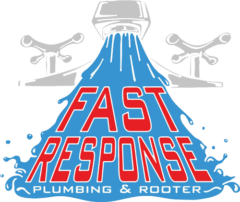Preparing for Installation

Before installing a new kitchen faucet, we need certain tools and materials and should make sure to disconnect the water supply. Removing the old faucet is also an important step in getting everything ready.
Tools and Materials Required
Getting the right tools and materials is key. We will need a basin wrench, adjustable wrench, and pliers. Make sure to have Teflon tape and supply lines if the new faucet doesn’t come with them.
Here’s a simple checklist:
- Basin wrench: This helps reach tight spaces.
- Adjustable wrench: Useful for loosening and tightening nuts.
- Teflon tape: Prevents leaks at connections.
- Bucket and towels: In case of water spills.
Gathering these items beforehand keeps our process smooth.
Turning Off the Water Supply
To avoid floods or leaks, turning off the water supply is a vital step. Locate the water supply valves under the sink. We need to turn these clockwise to shut them off.
If there are no individual valves, the house’s main water line must be turned off. After shutting the valves, we should turn on the existing faucet to allow any water left in the pipes to run out. This step ensures safety during removal and installation.
Removing the Old Faucet
Let’s start by unscrewing the nuts securing the old faucet using a basin wrench. It might be tough, especially if it’s been in place for a long time.
We should first disconnect the supply lines from the faucet with the adjustable wrench. After loosening them, take out the old faucet carefully. Make sure to clean the area around the sink hole to remove any grime or buildup. Preparing the area helps the new faucet fit well.
Mounting the New Faucet

Let’s get started with installing our kitchen faucet. We’ll go through how to put the parts together, attach the faucet securely to the sink, and connect the water supply lines.
Assembling Faucet Components
First, gather the faucet components. Check the faucet assembly for all necessary parts, like the rubber gasket and mounting hardware.
We might need a deck plate if our sink has multiple holes. This will cover any unused sink holes. Attach the escutcheon plate if required.
Next, let’s connect the sprayer hose, securing it well to ensure there’s no leaking. Review the instructions to confirm that each component is used correctly. Once all parts are together, we’re almost ready to move forward.
Securing the Faucet to the Sink
Now, let’s position the assembled faucet onto the sink. Align it with the sink holes.
We place the rubber gasket between the faucet base and the sink. This creates a seal and prevents water from leaking under the sink.
If using a soap dispenser, it might be a good time to position it. Insert the mounting screws into the holes beneath the sink and tighten them. Ensure the faucet doesn’t wobble. Properly secure it so it’s firm against the sink surface.
Our focus here is to ensure everything is tightly fastened without over-tightening. This prevents any damage to parts.
Connecting Water Supply Lines
With our faucet in place, it’s time to connect the flexible water supply lines. Identify the cold and hot water lines before proceeding.
Attach these lines to the corresponding water valves under the sink. We’ll need a wrench to ensure these connections are tight without overtightening. This avoids leaks but ensures a secure connection.
Once secured, double-check for any potential leaks by turning the faucet on and checking for drips around the connections. Adjust the fittings if necessary for a snug fit.
Now, it’s all set up, and we’re ready to enjoy our new kitchen faucet!
Finalizing the Installation
To make sure our new faucet works perfectly, we need to check for leaks and make some finishing touches. These tasks ensure that all parts are properly secured and functional.
Checking for Leaks and Functionality
After installing a kitchen faucet, turn on the water. Run both hot and cold, inspecting all connections. Look under the sink for leaking water. Tighten connections if needed.
Make sure the counterweight is attached correctly. This helps the faucet hose retract smoothly. Adjust until it pulls back without issues.
It’s important to test any additional features, like pot fillers, for proper operation. Open and close the valve to make sure water flows as expected and stops completely. We should feel confident that everything operates as it should.
Finishing Touches and Clean Up
Once leaks are checked, let’s turn our attention to cleaning. Remove any leftover debris or packaging materials from the area. Wipe down the faucet and surrounding surfaces with a damp cloth to remove smudges.
If the installation required caulk or a sealant, ensure it is evenly applied and smooth along edges. This creates a neat appearance and prevents future leaks.
Finally, gather all tools and materials, putting them away in their proper places. Our work area should be clean and organized. This ensures our space looks as good as it functions.
